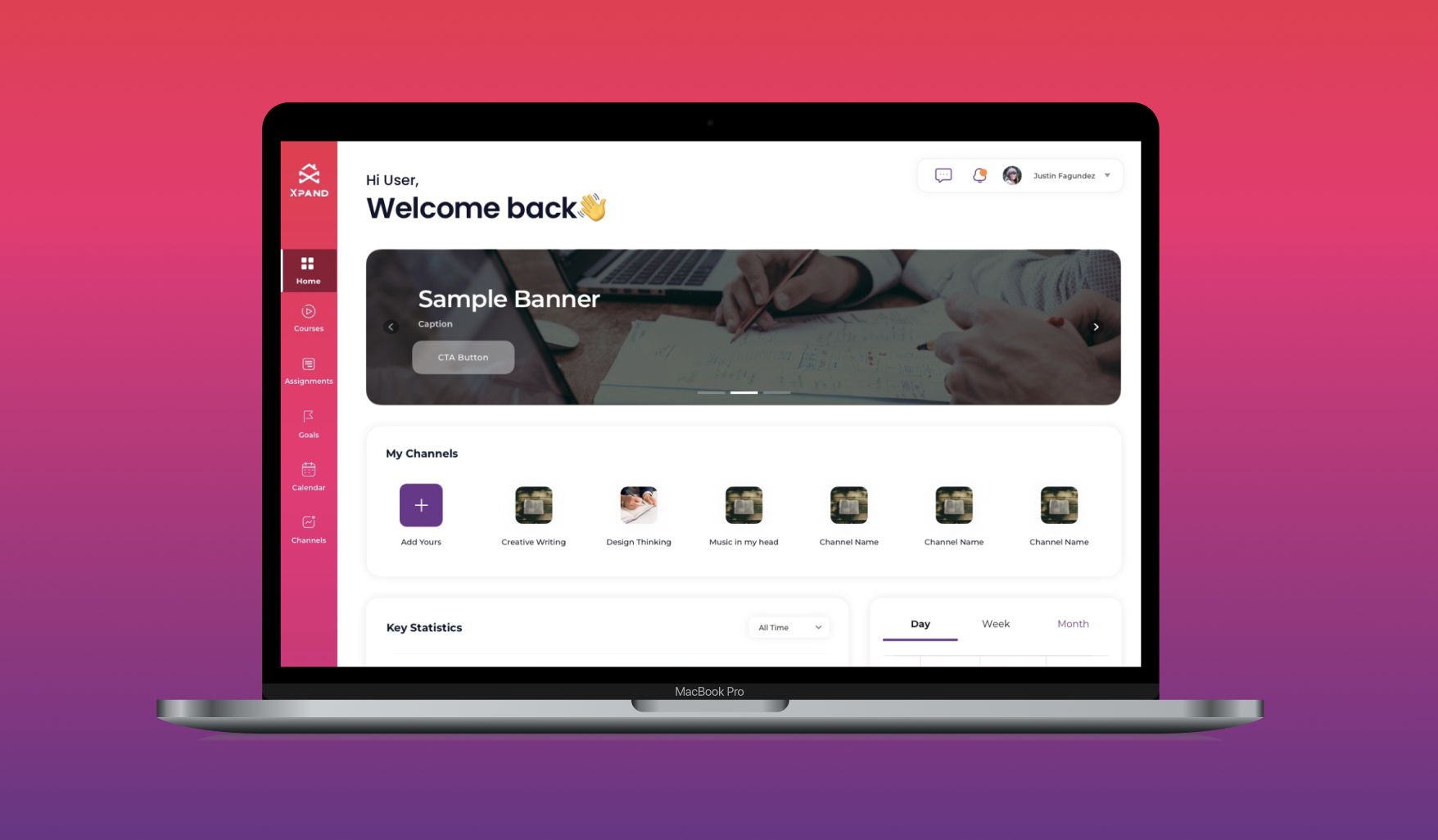
Xpand Rewards and Achievements
The military, boy scouts, elementary schools — to big businesses all use the same mental programming to get their people to follow RANK. Our prefrontal cortex has a constant release of the endorphin dopamine when you get a “gold star.” This is the same release that happens when you smoke a cigarette, super addicting.
Your job as a leader is to become a dopamine doctor, and be the one that prescribes it or withholds it. You should design systems of advancement, achievement, rewards and/or recognition for your people. The simplest way to put this is:
If you____ you get _____
When you _____ you don’t get ______
Highlighting your people by not treating them all as equals is super important. Sports teams don’t let everyone play the same amount of minutes, nor does espn talk about the benchwarmers much. You gotta privilege your top performers, and talk about them way more. When you see people performing make sure to highlight that because it makes those that aren’t competitive want to be seen, and it will also keep the recognized people wanting more.
This was a simple 4 phase system to earn your way into the champions club. Each week would update the board based on if anyone had achieved any of the milestones. If they had we would have them come put a sticker on the big laminated board on the wall, and give them tons of hype.
Once you completed all the elements of phase one you could then advance to phase 2 and you are now in the “CLUB.” What did it mean to be in the club?
When we had team activities like movie night, all the champions got in free and could raid the concessions stands. When we would have team BBQs the normal people would get hamburgers and hot dogs where I would bring steak for the Champions. Every time we held a team meeting I let the champions pick a drink of their choice from our Champions Fridge.
Steps to properly execute this were simple. First, set the parameters around the behaviors you are looking to drive. Second, have something publically tracking the progress of your people, and then daily, weekly, or monthly be recognizing people that are following your system. FREE ENERGY! You then start to call out those that aren’t ever putting up stickers, and start to question their buy-in, their commitment. They either need better training and support, or probably just are not cut out to be A players in your team.
I have categorized Xpand rewards and achievements different:
Xpand Achievement: When you have hit certain milestones and accomplished certain goals. The recognition of driving activities that lead to goals. People want some stamp of approval showing that they did something COOL! Hence why does Alcoholics Anonymous give out milestone coins when they show certain stretches of consistency. It’s an emblem signifying something, nothing more.
Examples:
- Read 100 Days in a Row (Consistency)
- Finished Assignments 1 and 2 (Actions)
- Benched 200 lbs (Achievement)
- Finished Courses 1-10 (Skills)
- Attended 6 Meetings (Participation)
- Lost 10 Lbs (Achievement)
- Sober 100 days (Habit)
- Act of Service in the Office (Culture)
- Sold 100 Accounts in 30 days (Achievement/Quantity)
Now give these cool names, a badge, an icon, or poster and show off those that are doing them. For example:
- Finished Courses 1-10 = Avid Learner
- Lost 10 lbs = Fast 10
- Sold 100 Accounts in 30 days = 10% Club
- Sold 200 Accounts in 30 Days = 1% Club
You can have fun with these, but people like to feel like they know what achievements are ahead of them, and which ones to aim for to do the driving behaviors to get it. You are now providing more of a game to success.
What you can do as a leader is create a catalog of achievements that will help push your people in the behaviors you are looking to drive. Give different achievements different priority and meaning. They aren’t all created equal. You want to leave your people saying things to their peers like, “WOOO you got the Mindfulness Master achievement, that’s epic, I’m still working on my Mindfulness Level 1.”
In the Xpand platform we have made this SUPER easy to create the game and the framework to track this. The biggest problem leaders face is collecting the data! If people complain about not earning rewards and achievements you must simply push them to make sure they are inputting the data and playing with the rules of your game. If you are going off the honors system, you will find little integrity and a lot of headache trying to manage it. Data is such a better source of truth.
Xpand Rewards: These are what you get for doing certain things above and beyond just a sticker, patch or badge of honor. Associate prizes, trips, privileges, access, recognition, income and more to these. Here are a few thought jogging ideas that may help:
- Lakers Tickets – Most amount of X this month (Quantity Goal)
- Trip to Hawaii – Most weight loss this quarter (Quantity Goal)
- Special Hat – Did X Habit for X amount of days (Habit Goal)
- 1% more in commissions – Sold 30 Accounts (Quantity Goal)
- Attend Leadership Conference – Finished Courses 1-5 (Skills Assignment or Goal)
- Team Dinner – Assignments 1-3 Finished by X Date (Team Assignments)
- Shirt – First Team to Read X Book (Achievement Goal or Assignment)
You can also give rewards to people that earn certain achievements or combinations of achievements. These pair well together.
Competitions:
Get your people competing against each other to earn the most, or the fastest. Creating a dog eat dog environment can be healthy. Friendly competition is such a powerful motivator for a lot of people.
Use individual or team goals and bracket systems to motivate your people to Xpand beyond what they mentally could fathom. Competition is what pulls the unexpected greatness out of people.
So often I see leadership launch poorly thought out incentives and prizes. These don’t have much accountability, tracking and meaning behind them. Then oftentimes the delivery of them is super slow. When you create a pattern of poor delivery and non meaningful incentives they quickly lose their weight.
Some best practices for competitions or incentives are:
- Promote them well in advance
- Don’t just spring an incentive or reward last min on someone, create some hype around it.
- Create marketing material in your office, social media, in the app that talks about it and when it goes live.
- Let the walls talk
- Use your office space if you have your people consistently coming in as a place to recognize.
- Print posters of competition winners, company record holders, people following your programs, top performers and bottom performers, etc.
- Show of those that have achieved and earned rewards
- Digitally Promote your People:
- Everyone likes to feel public love, so create cool images of their faces or names that you can push to your social media platforms or internal communication mediums.
- Have a running digital scoreboard. KPI tracker that updates on a regular basis so that people can consistently check themselves and compete to gain higher ranks.
- Words of Praise
- On your company calls, group training, or events make sure to praise those that have earned achievements and rewards. Hearing your own name with praise is always music to people’s ear.
- Deliver Fast and with a Bang
- Even if you are giving a hat, make the hat a big deal. Most of the time it isn’t about the hat, its about the pride in the accomplishment or winning.
- Don’t make your people chase you down to cash in their rewards. Have a system that helps you order, produce, hand out or ship quickly. A best practice is to have the prizes before you even start the incentive or competition.
- Create exclusivity. Don’t devalue the prizes you give out by producing more and handing those out freely. I have seen people let ALL their employees go on the trip even though they didn’t hit the metrics to earn it. This then lowers the expectations for the next time you launch a trip incentive for example.
Check In:
A common mistake a lot of leaders make is they launch an assignment or reward and have very little follow up along the journey of their people. You should create reminders or a cadence to check in with your people and ask them about their progress or experience. Automation can also help you set up auto triggers to consistently bring the objectives to top of mind awareness. The more you talk about something, the more importance it seems to have.
A simple message of “how’s it going with XYZ…” will go a long ways. What typically happens are people are natural procrastinators. Your job as a leader is to help them avoid making one big push close to their deadlines. Teach them how to prioritize and get a little done each day, or do the uncomfortable things first.
Your people are going to most likely give you a STORY in response to that. “Oh well I had to take my mother to the doctor, and then my client called and I couldn’t take time to get on it..”
As a coach don’t stand for the consistent excuses you will get! Hold them accountable to making time. This pattern is something that shows up all over their life, and they need to be called out on it, and required to take ownership.

